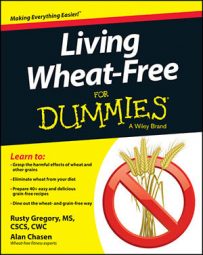You’re probably going to want to look for detailed information about how and why you want to go wheat-free. To whet your wheat-free appetite, though, here's an abridged version of how to accomplish your goal right now.
Clean out your kitchen.
Your refrigerator, freezer, and pantry must be void of wheat, added sugar, and vegetable oils so you have no temptations to your new way of life. (While you're at it, you might just chuck out all grain products entirely.) Why risk getting derailed?
Head to the grocery store to restock the kitchen.
Your items are going to come from the perimeter of the store, where the fresh fruits, veggies, meats, and dairy reside. A few essentials you should always have on hand are pasture-raised eggs, coconut oil, grass-fed beef, dark leafy greens, and an assortment of organic berries.
You may also want to buy an assortment of nuts, cheeses, raw veggies, dark chocolate, and Greek yogurt to have on hand for snacks. Your snacking needs go way down from your norm when you're wheat-free, but sometimes it's nice to nosh a little.
Optional: Get some tests done, such as a basic lipid panel.
Sometimes getting a lipid panel is as easy as walking into your local drugstore. Although it's not necessary, it's a good way to get a baseline for your health markers so you can track your progress.
Start thinking about your exercise plan.
Make a trip to the nearest gym or head to a fitness equipment store if you plan to work out at home. Exercise is an integral part of your success, so don't delay.
So basically you are going back to a low-to-no-grain, low-sugar, high-fat diet that was far more common more than 50 years ago. Just return to the habits that were once prevalent, where real food was the norm and very few people ate anything out of a box or from a drive-through window.
Transitioning to a wheat-free lifestyle isn't easy. Though it’s best to go cold turkey, everyone has missteps along the way. It's a process that evolves over time as you get more and more comfortable with what you can and can't eat — or rather, choose to eat and not eat.

